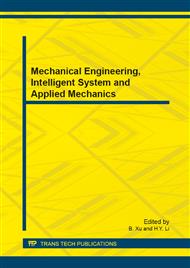p.215
p.219
p.226
p.231
p.235
p.239
p.243
p.247
p.251
The Industrial Manipulator Control System Based on Programmable Logic Controller
Abstract:
Industrial manipulator has become an important and indispensable part of the modern industrial production, This paper studies the industrial manipulator control system based on programmable controller, This paper mainly introduces the software design of PLC control system, analyzes the various modules of the composition manipulator control system , Adopt Mitsubishi PLC design of manipulator system was put forward, the function and the control method of Mitsubishi PLC was studied; Experimental results show that the manipulator can eventually exercise according to the requirements of the control program ,and implement the monitoring system of this manipulator intuitive image observation, reached the design purpose and the requirements of this paper.
Info:
Periodical:
Pages:
235-238
Citation:
Online since:
December 2013
Authors:
Price:
Сopyright:
© 2014 Trans Tech Publications Ltd. All Rights Reserved
Share:
Citation:


